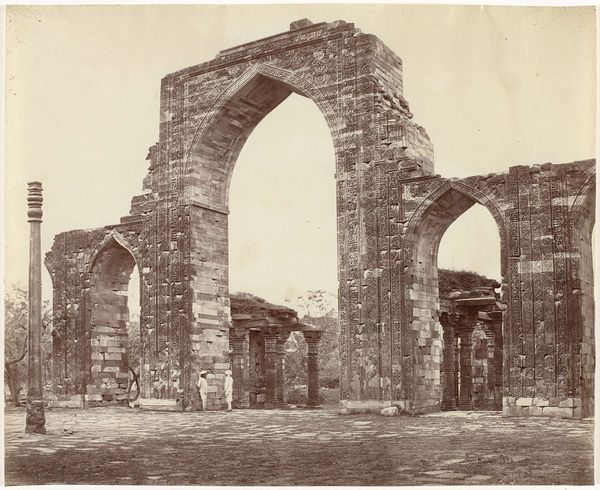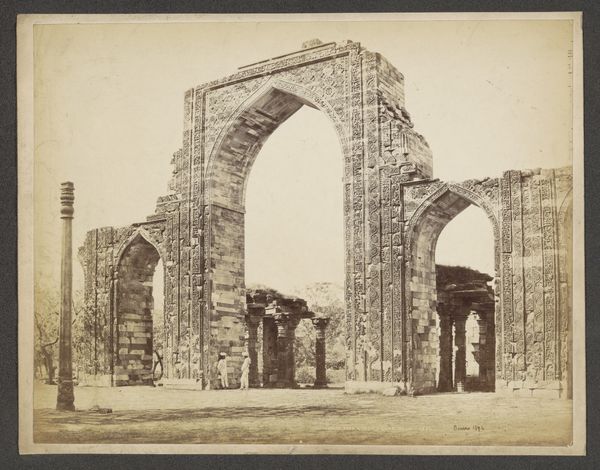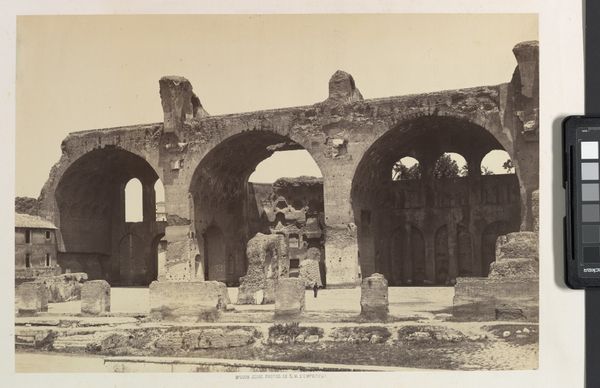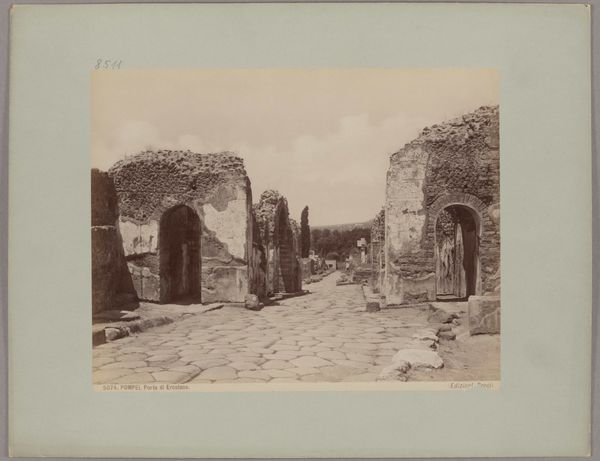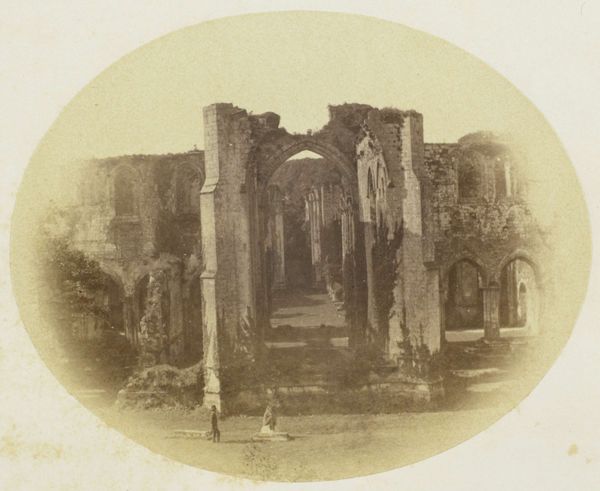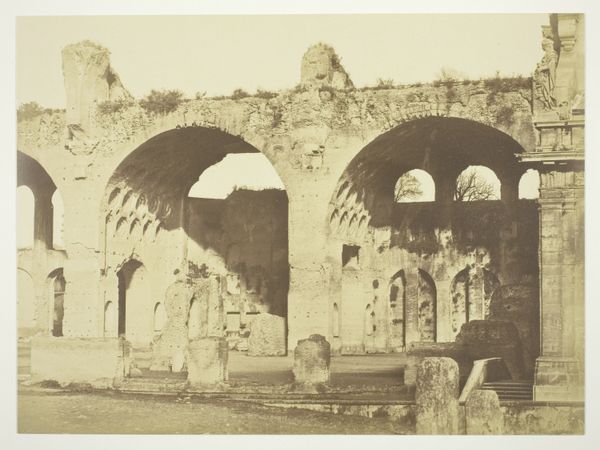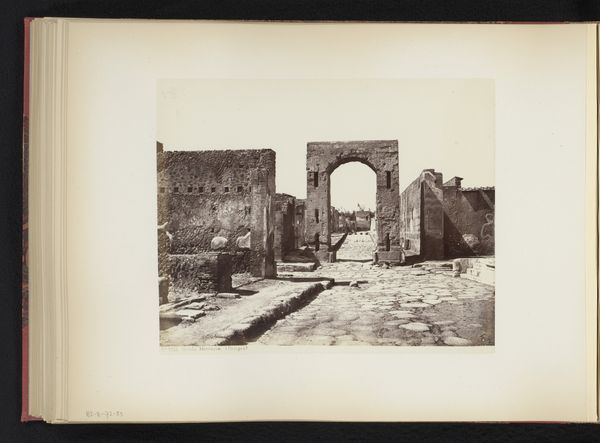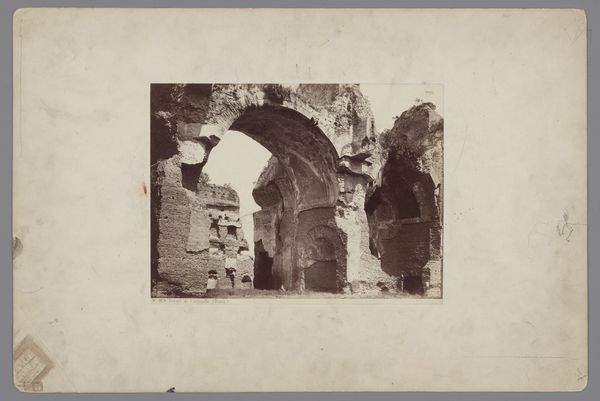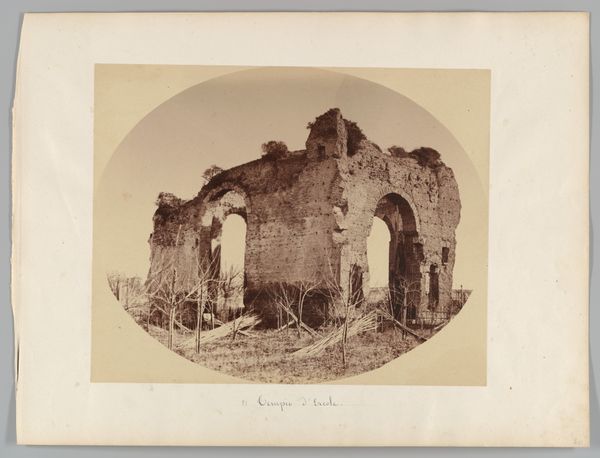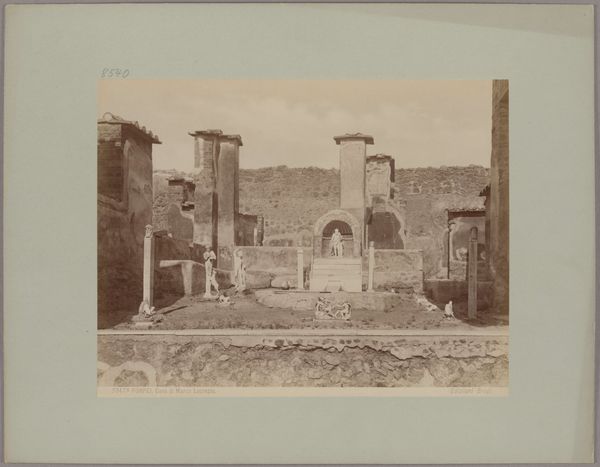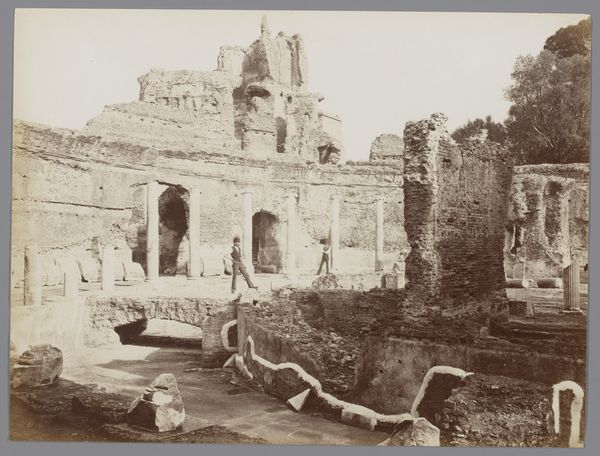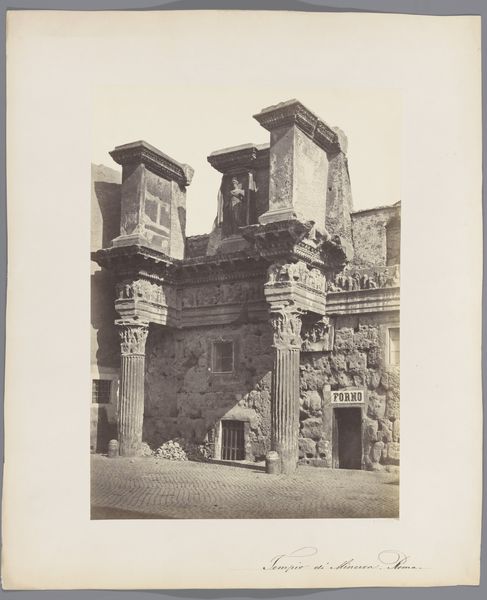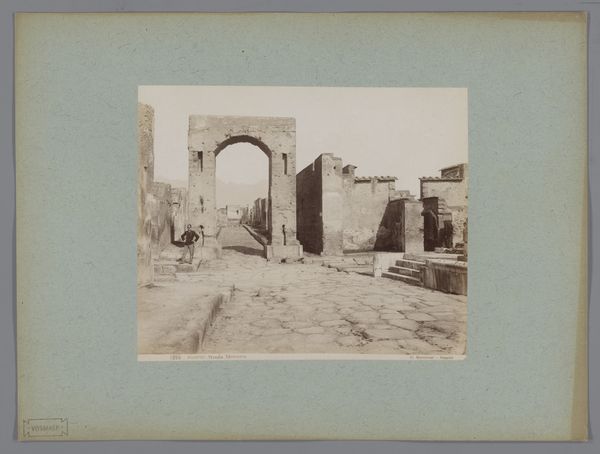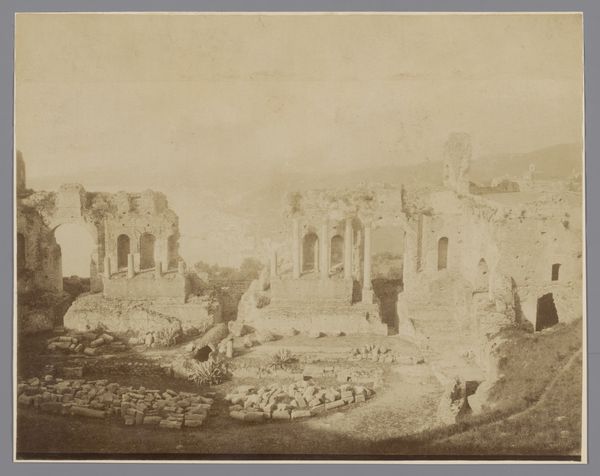![[Blue Mosque of TABRIZ, 1465.] by Luigi Pesce](/_next/image?url=https%3A%2F%2Fd2w8kbdekdi1gv.cloudfront.net%2FeyJidWNrZXQiOiAiYXJ0ZXJhLWltYWdlcy1idWNrZXQiLCAia2V5IjogImFydHdvcmtzLzY3Yjg0NDMwLWZlYjUtNGZhZi1hNGU1LWQ3NDgzMTA5NTEzMi82N2I4NDQzMC1mZWI1LTRmYWYtYTRlNS1kNzQ4MzEwOTUxMzJfZnVsbC5qcGciLCAiZWRpdHMiOiB7InJlc2l6ZSI6IHsid2lkdGgiOiAxOTIwLCAiaGVpZ2h0IjogMTkyMCwgImZpdCI6ICJpbnNpZGUifX19&w=3840&q=75)
print, photography, architecture
# print
#
landscape
#
outdoor photograph
#
archive photography
#
outdoor photography
#
photography
#
historical photography
#
arch
#
islamic-art
#
architecture
Copyright: Public Domain
Curator: Looking at this 19th-century print capturing the Blue Mosque of Tabriz, taken sometime between 1840 and 1869, the overwhelming feeling is one of profound decay. Editor: Absolutely, there's a palpable sense of loss. The ruins feel almost monumental despite the degradation. I wonder about the socio-political forces at play that contributed to the building's decline. Curator: The photographer, Luigi Pesce, has certainly captured that sentiment. This print provides insight into a site of significant historical and religious importance. Originally erected in 1465, the mosque represents a critical period in Persian Islamic architecture. We're witnessing its public presence then. Editor: Considering its past prominence, the scene now evokes powerful questions. Who had access to photograph these ruins, and how were these images circulated? These photographs serve as evidence, capturing a narrative of change but also power dynamics and colonial gaze. Curator: Indeed. These visual records became integral to shaping Western perceptions of the East, and here, Pesce is acting almost as a surveyor, documenting what remained. Note the deliberate framing and careful exposure. Editor: Which brings up questions of Orientalism and the active creation of a romantic, crumbling "other." It prompts thoughts on cultural heritage and who decides what is preserved and remembered. Also, what’s the ethical implication of presenting decay, turning damage into aesthetic object? Curator: A crucial point. It challenges us to investigate the politics ingrained within preservation itself. While highlighting the damage, the photograph also offers a glimpse of resilience; the building’s elaborate tilework, the arch still boldly holding up. Editor: That architectural detail, viewed through today's lens, becomes not just artistic appreciation but a stark commentary on time, empire, and shifting cultural narratives. We need more space for conversation and interpretation when sharing works from formerly colonized regions. Curator: And a reevaluation of who controls that space, particularly in museum environments. Looking again, the ghostly figure in the lower left also speaks to that. Editor: He’s almost fading away. He really underscores our responsibilities as curators, artists, writers and the impact our perspectives can have. We have a lot of thinking to do.
Comments
No comments
Be the first to comment and join the conversation on the ultimate creative platform.
